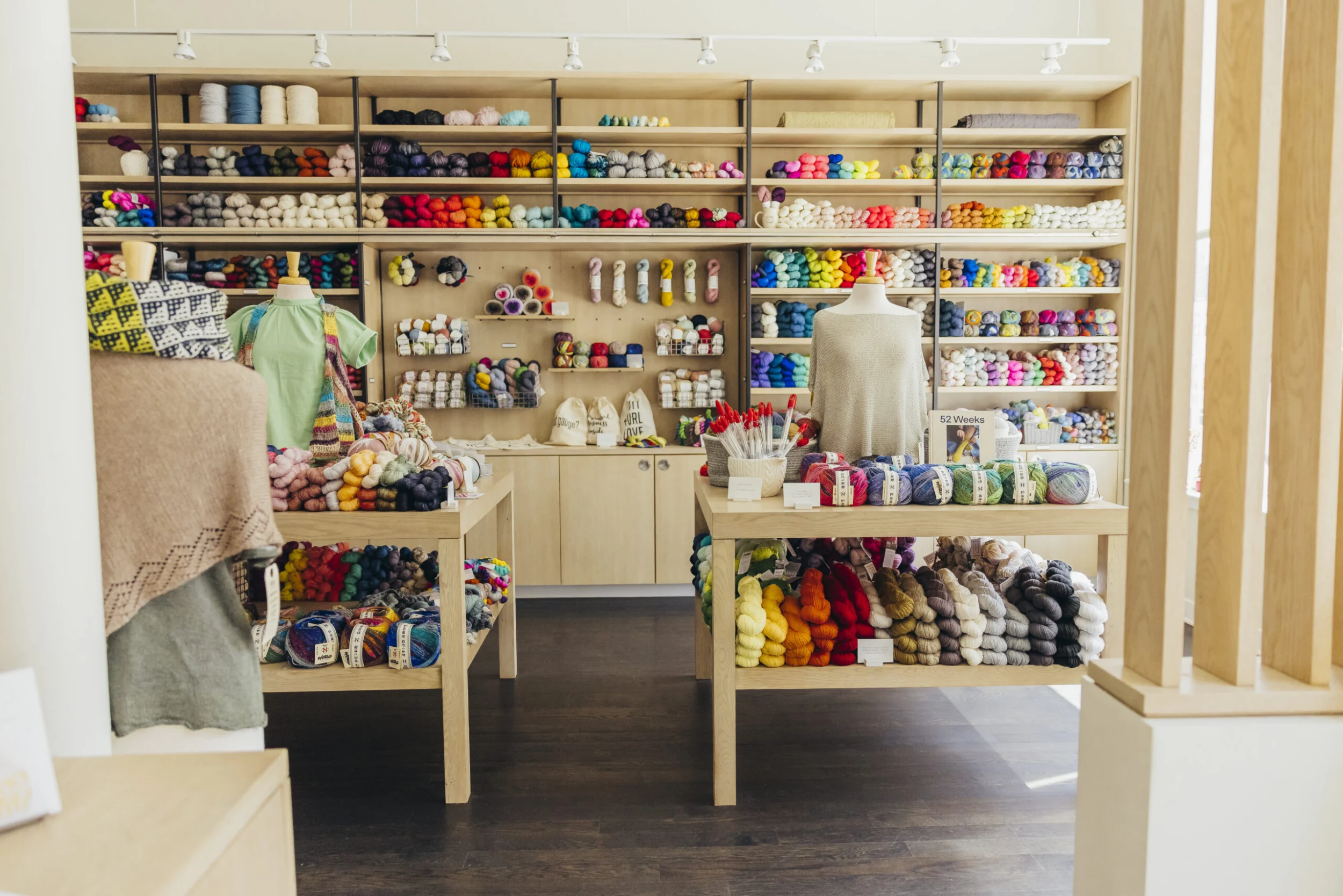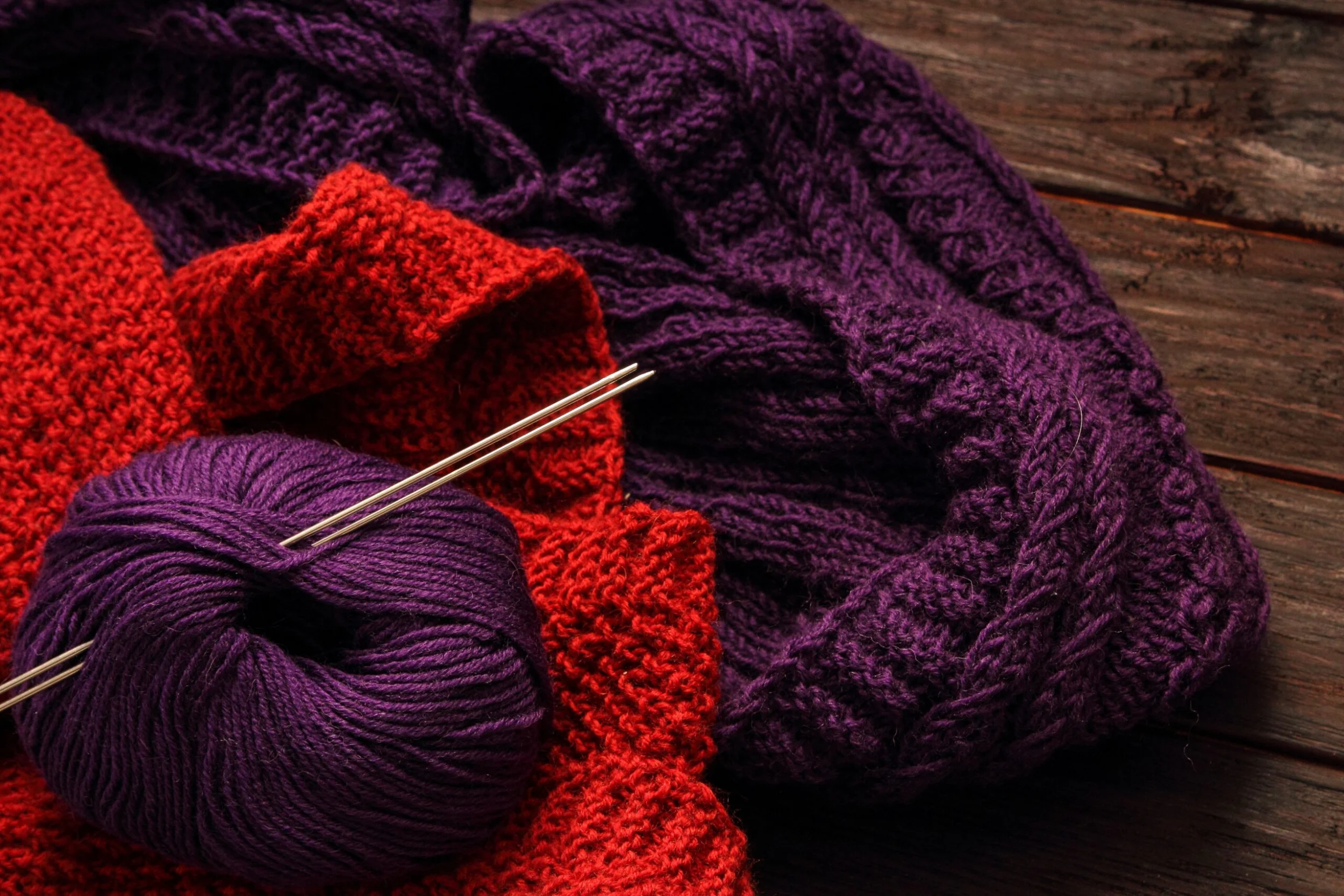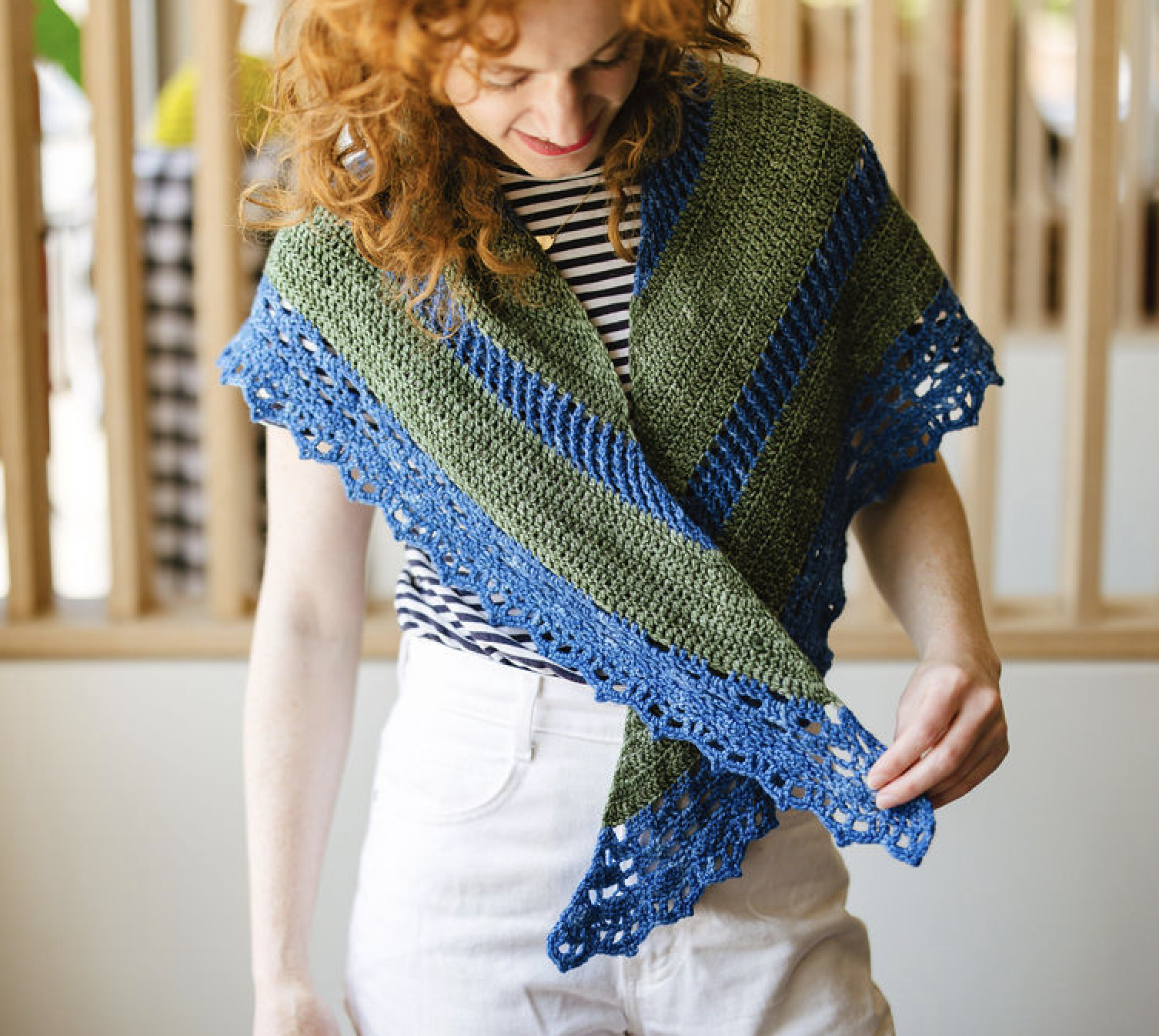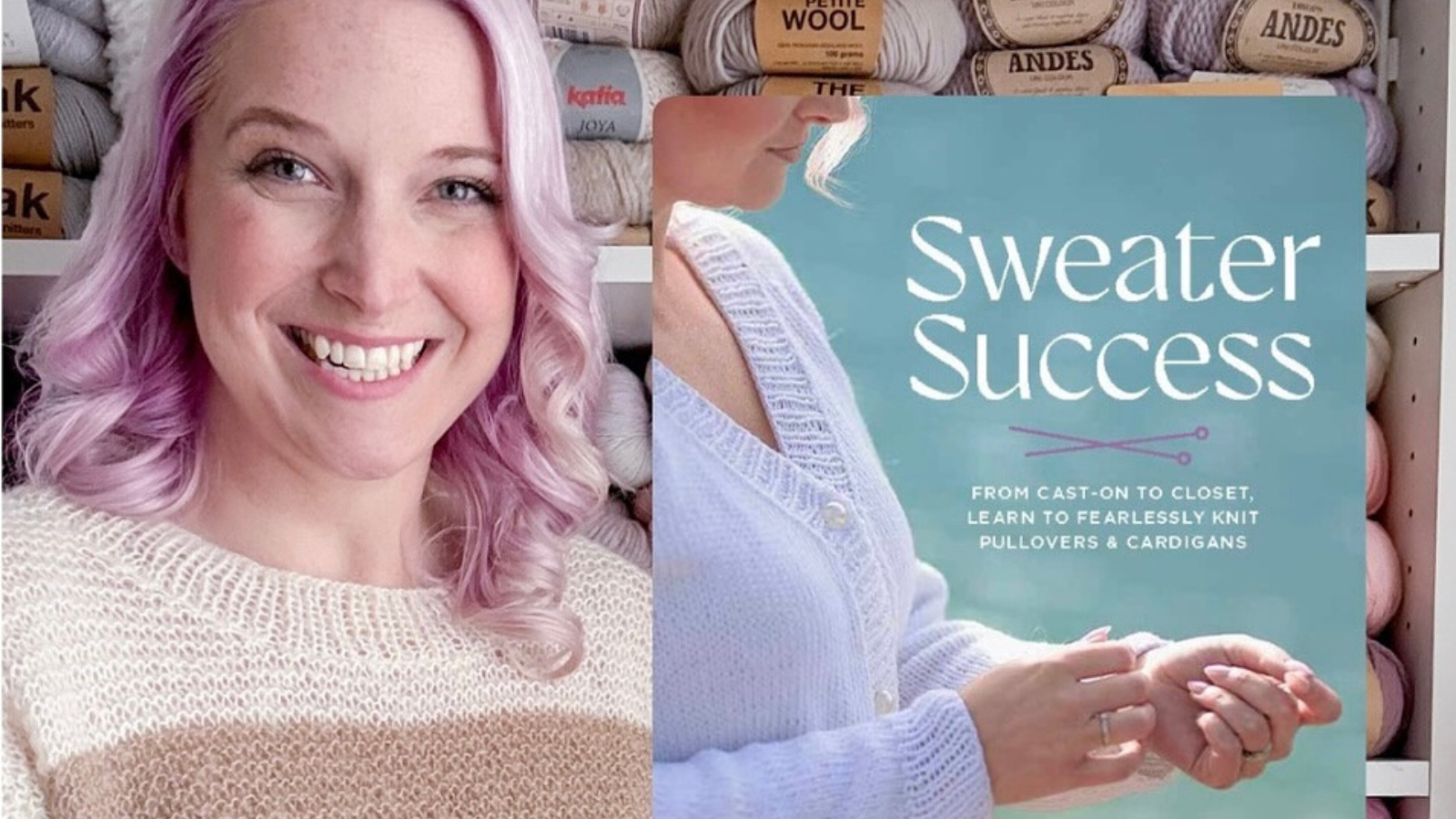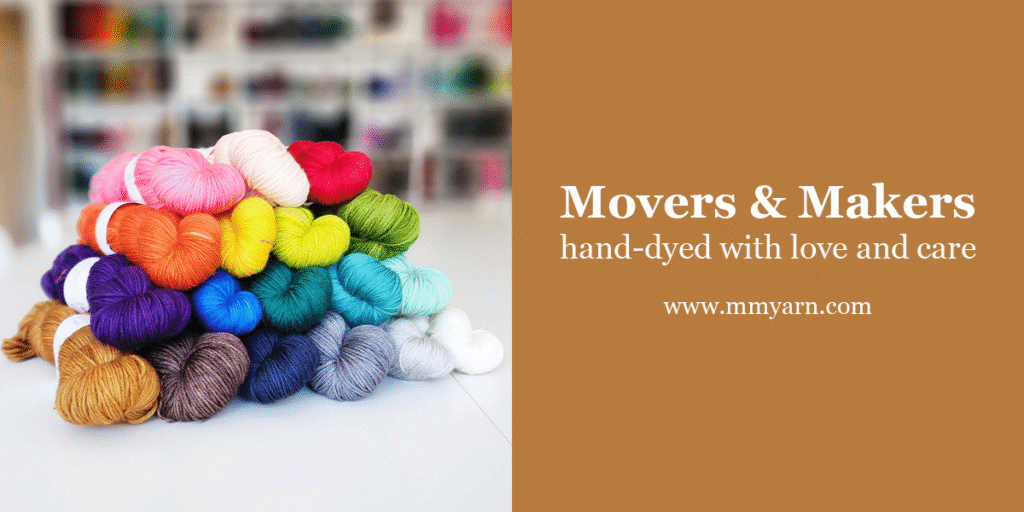Collaboration should be a two-way street! In Part One, we discussed finding the right fit and what the yarn companies need to bring to the table. Now it’s time to package what you are bringing to the table for them.
prepare your pitch
We believe that the crafting industry is built on relationships, so consider working with yarn brands and companies that you can build a strong long-term relationship with. When a yarn company agrees to support a designer with yarn support they are donating their time, product, and paying for shipping all with the hope that the investment will payoff long term.
When prepping your yarn support pitch, think about it from the perspective of the person who will be reading it. What do you bring to the table if they support your design? Do you have a large email newsletter that you will use to support your pattern release? Does the release coincide with a holiday or an event that could push sales?
Think about the ways you add value and working with you will attract your audience to their yarns. In a world with many, explain why are you the one for them!
Your pitch shouldn’t be one size fits all. Using a template for an outline is great, but having a rinse/repeat approach to working with various yarn brands will not get you where you want to go. Take time to hone your pitch to the one being pitched.
A great yarn company pitch is centered around your idea but makes your collaborator feel like a star. If you’ve put the time into researching and preparing your design idea from start to finish, your potential partner will notice and is more likely to send you yarn support or enter into an agreement with you for design work.
Whether you’re submitting to an open call or sending an inquiry to open the relationship, fully customizing your submission can set you apart from other requests. They shouldn’t feel like you are copying and pasting your pitches from company to company. Add details about why you are excited to work with THEIR yarns. If it’s your first time working with them, what made you choose to reach out?
If you are a sustainability advocate and you want to work with a sustainable yarn company, share that detail! Your passion gives them a sneak peek at the kind of promotions you will do for the pattern after the release.
follow their prompts
It can be tempting to get creative when it comes to pattern calls but it’s super important to ALWAYS follow the instructions if you are responding to a call. From replying through a specific email, adding a specific subject line, following the requested theme, or including a specific yarn/colorway in the design – it is crucial that you present the company with what they are looking for. A call to action for holiday projects is not the place to submit your beach towel design.
Yarn companies are overworked and there is usually only one person reviewing all of the hundreds of designs that come in for a single design call. It’s important to make their work as easy as possible.
Use the yarn that they asked you to use or a similar yarn in color, weight, and texture, to illustrate your design in swatches and sketches. Show, rather than tell, how great the finished product is going to look using their materials.
Include a sketch or schematic to illustrate the finished product. If you aren’t great at drawing on paper or digitally, use inspirational photos and notes to illustrate the finished texture and fit.
Yarn companies are full of creatives, so paint them a picture!
explain your vision
Outside of images, words are another key component of your pitch package. Include notes surrounding your pattern’s imagery and explain why you think this yarn is a perfect match for your idea. Talk about the final texture, needle size, and drape of the finished material, technical elements and special details within the piece, and who it is made for.
Imagine the pattern live on their website. And take a look at the patterns on their website/Ravelry when you do this exercise. What details will they need to call out in order to drive sales? Estimate how much yarn will be needed. Will your yarn quantities line up with what they currently have on their website or will you overprice/underprice their audience? Do they already have a wide selection of what you are offering them? How will your pattern differ while still aligning with their current aesthetic?
clearly define your terms, expectations, & timeline
Often, yarn support agreements don’t come with a contract, so make sure you get all the questions out of the way early in case both parties decide a formal agreement is unrequired. The following shouldn’t be in your initial email. But once you’ve moved your yarn request to the next stage ask them and yourself the following questions:
Are you looking for yarn support, or are you hoping to sell this pattern to the company?
How much yarn are you requesting, and for what sample size will you be making?
Do they keep the sample or do you?
Will they handle photography or will you?
Do you want to request multiple colors in your required quantity to have a second sample made, or to send to a tester?
Do they offer discount codes for your testing pool to purchase the same yarn?
What are your marketing expectations from the company–and what is your marketing plan for the pattern release?
Do you have a projected release date? Do they have a specific date that they need you to release your pattern by?
Do they have any promotions or sales coming up for the yarns you are using? Can you align your pattern release with those promotions?
This might seem like a lot of information to think through, but setting a deadline and sticking to it will illustrate your professionalism and dedication to the project. You aren’t just “another designer asking for free yarn” when you appear with a fully realized proposal.
hit send
Many companies have Contact Us pages on their website, but sometimes you can find special information about yarn support or design requests in the footer, too. Attach your pitch as a PDF for easy viewing, you can make an aesthetically pleasing one by using tools like Canva or Notion. Include enough information in your email to illustrate your request (copying directly from the text you’ve already laid out in the pitch is usually the most helpful). The email should be the high-level points that make your design and request stand out and your attached pitch should go deeper.
If you can’t find an email address for the company, reach out and request one for “partnerships and collaborations” via their social media–don’t try to pitch on social media, where things can easily get lost and you may not be able to upload your attachment. Plus, the person who runs their social media might not be the same person you need to pitch to. Keep it short and sweet.
Another option is to look through LinkedIn! Check the company’s employees and take a look at their job titles. Once you’ve found someone in creator/influencer management, design, or marketing; same as on social media, send them a direct message asking for the best email to reach out to for “partnerships and collaborations”. It should be professional and short.
now you wait
Patience is key when bringing another entity into your working relationship. Not everyone you reach out to will get back to you in the same timeline you’re used to operating within. If you’ve put a lot of time into your pitch, not hearing back can feel a little disheartening. It’s important to remember that these companies (especially the larger brands) are getting a lot of requests every single day. It’s very possible that they simply didn’t see it.
Double-check and evaluate your initial email. What subject line did you use? Did you follow the request instructions? Once you are sure that your original email was correctly laid out, follow up after a week (depending on the deadlines) to make sure your message has been received.
If you don’t hear back, give yourself a personal deadline, too–if you don’t hear back from the company by that date, it’s ok to move on to the next company who will ultimately be a better fit for you.
Consider starting with a smaller brand that fits your aesthetic rather than a large company. Yes, it’s more of a financial burden on a small company to take on yarn support offers but it is also easier to get seen by them because they are getting far fewer emails per day.
If you only take two things away from this post it should be the following…one try not to take it personally if you receive a no. Even the biggest designers get told no sometimes and have been told no MANY times before they got their first yes.
It’s all in how you bounce back. Take a look at your pitch and see if there are areas where it could have been improved. Then prep your pitch for a different company!
And two, you never know until you ask! Don’t feel intimidated. You might be surprised at how easy this process can be when you show up with the correct pitch!
You can do this!
